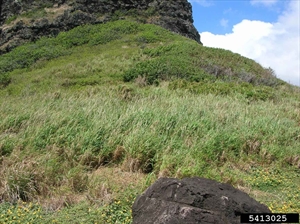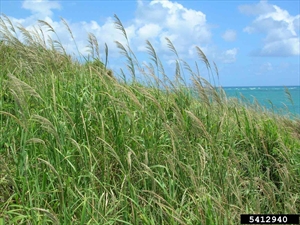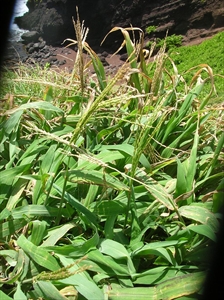- Worldwide distribution. In Fiji, Guam, Marshall Islands, Northern Mariana Islands, Papua New Guinea, Solomon Islands, Vanuatu.
- Invasive grass of disturbed habitats, invasive where native as well as introduced, forming dense stands in wastelands, roadsides, abandoned fields, pastures, forests, crops (citrus, coffee, cotton, forest nurseries, maize, pineapple, tea). Host of maize viruses. Threat to native grasses (Hawaii).
- Erect, up to 1.5m; stems from short swollen rhizomes, and branching from lower and middle nodes. Leaves up to 40cm, edges rough, sheaths hairy, ligule 3-4mm. Flower clusters whitish, slender up to 30cm, with up to 50 branches, each with paired spikelets, containing the flowers (florets).
- Spread: seed on the wind, rhizomes; over long distances on clothing, machinery, vehicles, contaminant of pasture species.
- Biosecurity: check seeds of other species.
- Biocontrol: none.
- Cultural control: remove seedlings. Replace with competing grasses (buffel or Guinea). Clean machinery/vehicles.
- Chemical control: glyphosate; if resistant, use fluazifop or nicosulfuron, depending on crop.







